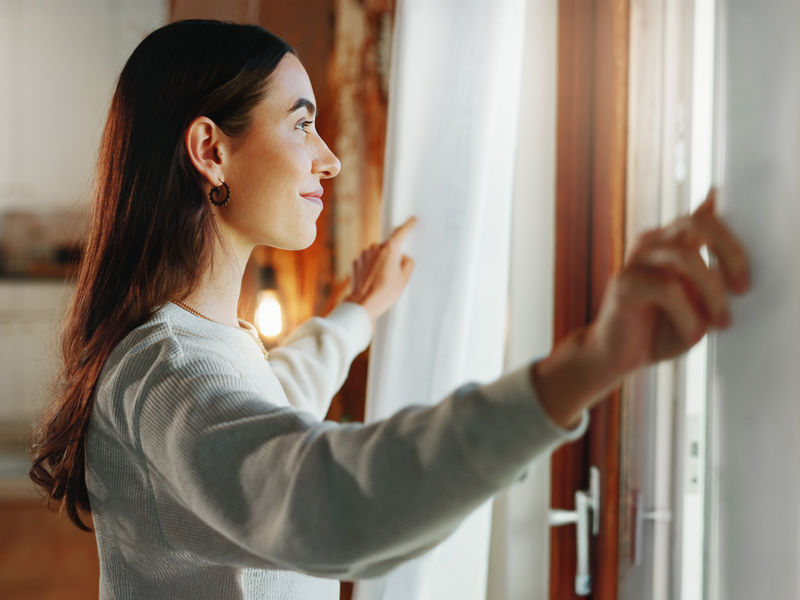Energy Makeover (before): How to make an older home more energy efficient

Thinking about making your home more energy efficient but not sure where to start? You’re not alone. That’s exactly how Sarah, a busy single mom of two, felt when she first moved into her 1960s-era, all-electric, ranch-style home. As a PGE employee, Sarah knew that older homes can come with energy inefficiencies — but she also knew there were simple, cost-effective steps she could take to start saving.
Over the years, Sarah gave her home what she calls an “energy makeover.” In this post, we’ll share how she got started, the tools and resources that helped her prioritize upgrades, and what worked best for her home and her budget so you can learn from her makeover. Other posts in this series dive deeper into some of her steps and upgrades. And in a follow-up post, we check in with Sarah years after the upgrades to see how they held up. Let’s take a look back at where it all began.
Step one: Get to know your home
Before she even moved in, Sarah’s pre-purchase inspection flagged a few common issues in older homes — outdated insulation, aging aluminum windows and radiant ceiling heat. But knowing what to tackle first, and how much it might cost, wasn’t easy.
So, Sarah started with the basics. She used a free online tool to get a quick evaluation of her home’s current energy use. (You can do the same in your PGE online account dashboard.) After answering a few questions, she received a custom snapshot of how her home was performing, along with tailored recommendations for improvements and available incentives.
Step two: Get a home energy audit
To dive deeper, Sarah decided to book a professional home energy audit through a certified Energy Trust of Oregon trade ally. These in-depth assessments analyze your home’s energy use from top to bottom — including heating, cooling, lighting, appliances and water heating — while also identifying where energy might be escaping through leaks or poor insulation.
While many audits start at $200, Sarah paid around $450 — even so, the value was clear. A trained analyst spent several hours inspecting the attic, crawl space, appliances, heating system and more, even using tools like infrared imaging and blower-door testing
to detect hidden inefficiencies. Afterward, she received a detailed 20-page report with prioritized recommendations, estimated savings and incentive information.
The results surprised her. The suggested upgrades could cut her energy use by up to 47%, and they didn’t include replacing her old windows first. Instead, her top priorities were adding attic insulation, sealing air leaks, replacing her water heater and heating system, and ditching an older second fridge in the garage.
Step three: Set priorities and make a plan
Armed with her audit report and cost estimates, Sarah chose to start with projects that offered the biggest return on investment: adding attic insulation and having the whole house “air sealed.” Shortly after, she replaced her failing radiant ceiling heat with a new ductless heat pump — a move that not only brought efficient heating in the winter but also added cooling in the summer.
This was the order the audit recommended, Sarah said, because “It’s no good putting in a super-efficient HVAC system if all that warm air is just gonna leak outside.”
Later that year, she made another small but impactful upgrade: Her old side-by-side fridge in the kitchen was the biggest energy drain, accounting for a large part of the nearly 21% of her electricity use her appliances drove. Replacing it with an efficient fridge made a big difference, even though other appliance updates had to wait until a future kitchen remodel.
Step four: Look for DIY wins
Some upgrades don’t require a contractor. Sarah opted to buy “honeycomb” window shades instead of replacing her windows — a budget-friendly choice that added insulating value, cut down on drafts and improved her comfort year-round. She also replaced outdated lighting with LEDs, which use up to 85% less energy and have come down significantly in price.
Big savings, smart choices
Older homes can be full of charm — and challenges. There’s a reason people say they’ll take as much time and money as you’re willing to give them. But Sarah took a smart and strategic approach over several years, focusing first on the upgrades that would save energy and improve comfort. She made decisions that balanced aesthetics with efficiency, and she used tools and incentives that helped her stretch her budget further.
“Most of my home improvements weren’t the typical cosmetic ones I wanted to make at first,” Sarah said. “But each step helped me save money that paid for the next step and eventually we tackled some of those cosmetic upgrades too. I learned that the sooner you take action, the sooner you reap the benefits.”
In a future post, we’ll see how things are going years later. We’ll find out which upgrades she still loves, what she might do differently next time and how her energy makeover continues to pay off.
Share this article
<Previous Article
Energy Makeover: Evaluating your own homePUBLISHED
Jan 8, 2024
CATEGORY
SAVING MONEY/ENERGYRelated Posts
SAVING MONEY/ENERGY
A cozier, smarter Thanksgiving: Energy efficiency in the kitchen and beyond
SAVING MONEY/ENERGY
Bring in the light: Cozy, efficient ways to brighten winter
SAVING MONEY/ENERGY
Nerding out on energy: A customer’s dashboard story